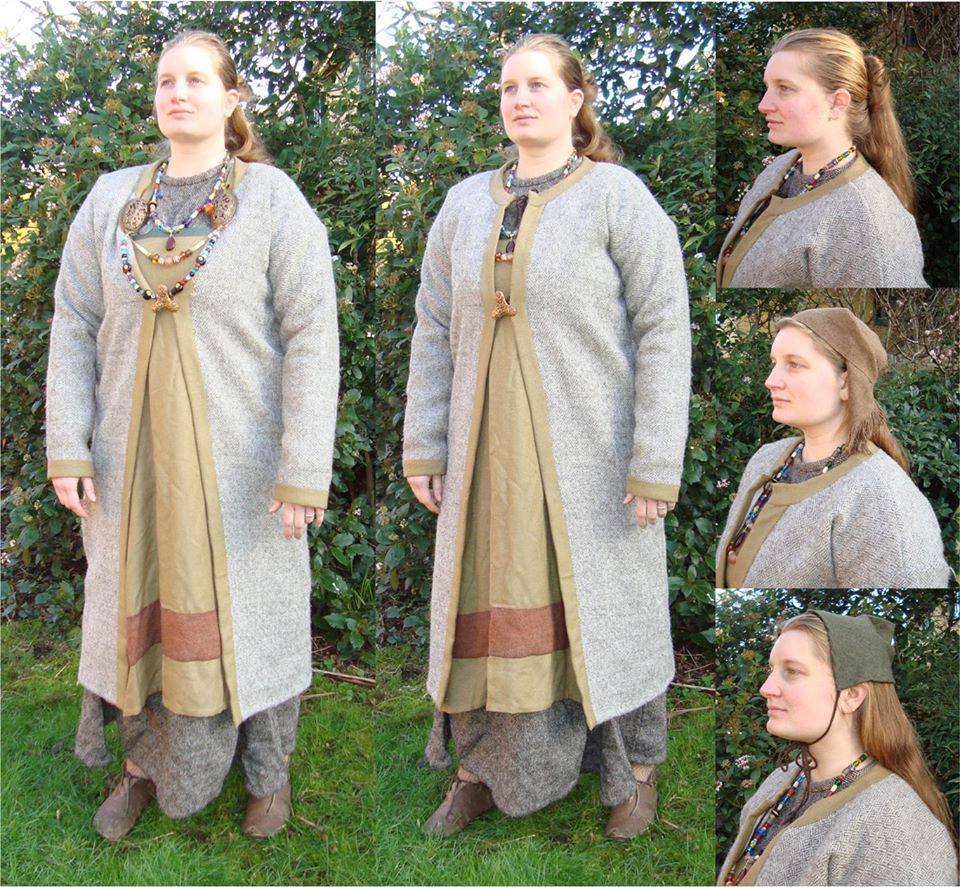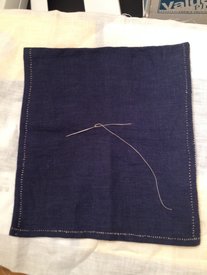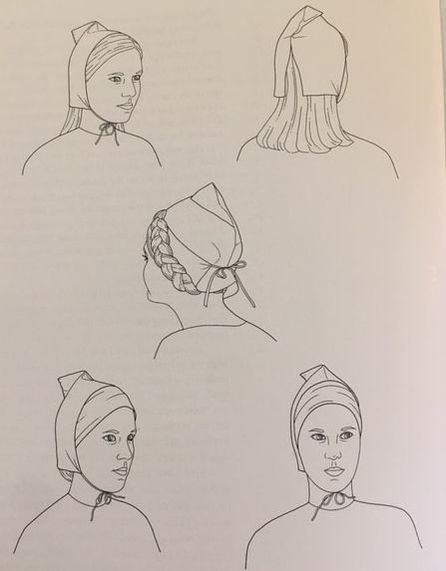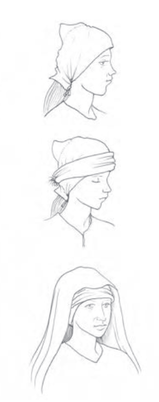There is some scant evidence of a straight edge opening, so when I made my own coat, I opted for something between the two. I choose a deep V neck that has only the very slightest curve to it. Unfortunately, my entire coat came out too large, so that neckline opens up too much and the whole thing wants to slide off my shoulders. (Fortunately, I already have cloth with which to craft a new outergarment at some point.)
I think the most brilliant reconstruction I have seen so far is offered by a reenactor named Louise Archer. She gave me permission to share her work here. Her coat is which is made from a Herdwick diamondtwill wool and in her detail photos you can see she has a Dublin scarf. That is made from Manx Loghtan wool! (I cannot express how much I love her choices, and how lucky I think she is to find these wools to work with.) Her coat comes to the neckline, as would a straight-opening male caftan. She can fasten it at the top for warmth, OR just use the brooch further down, which allows it to open at the top around her brooches and bling. This is practical the similarities to the proposed male garment make it make a great deal of sense. Beyond that, this construction (or anything with a straight edged front) also makes it somewhat similar to items from nearby cultures (such as Frankish or Saxon women's coats).
Beyond her wonderful coat, I also wanted to point out the photo of her Dublin style cap. This very will illustrates one of the points I made a few days ago in my article on the facts we have about headcoverings from the Viking Age (that being that all of the extant examples are actually very, very tiny).
I really love this work and look forward to seeing more from Louise.





 RSS Feed
RSS Feed